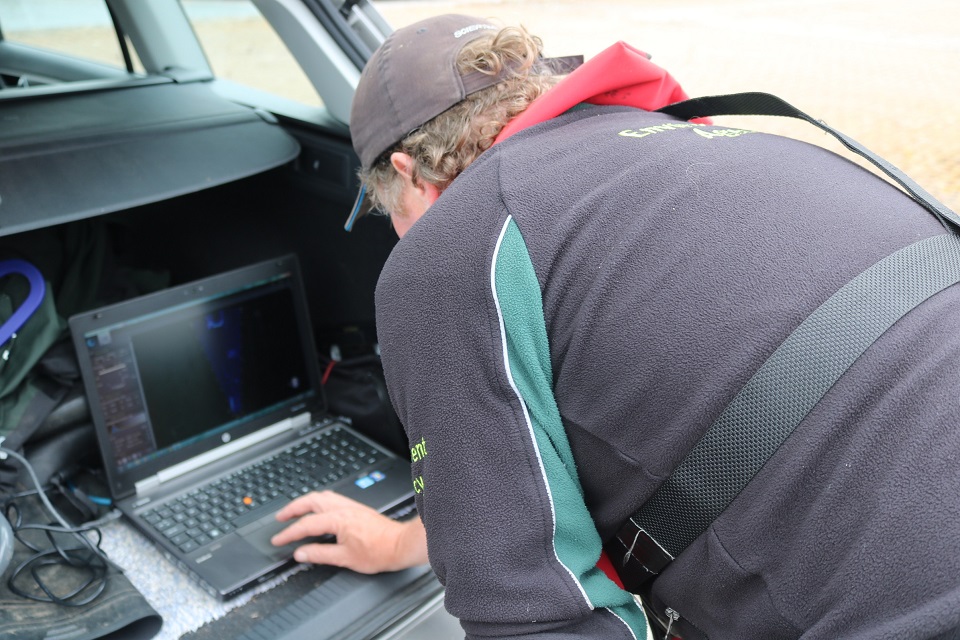The Environment Agency has carried out underwater sonar surveys to check for young salmon using a new route across the Tees Barrage gates.
And the results show the juveniles – known as smolts – successfully making their journey from spawning grounds upstream out to sea.
It follows changes to the operation of the Tees Barrage in 2015, which means on every tidal cycle the gates are lowered to allow fish to pass both upstream and downstream.
Surveys have shown the barrage gates are the main route for salmon migrating upstream and the automation of the gates has resulted in an extra 1,500 hours per year of fish passage for returning adult salmon to reach their upstream spawning grounds.
It’s in addition to the other routes that salmon use including the Barrage’s navigation lock, the Denil fish pass, the fish pass in the white water rafting centre, and the main canoe slalom.

Downstream migration improved
Phil Rippon, Fisheries Technical Specialist at the Environment Agency, said:
As well as improving the routes for returning adult fish we are also looking to improve the downstream migration of these precious fish and maximise the number of smolts reaching the North Sea.
By lowering the main barrage gates at set times, it means that as well as providing an additional upstream route for adult salmon we are providing a much easier route for the young salmon moving downstream as well. It is known that the sooner the smolts reach the sea the better their survival chances are, resulting in more returning adult fish.
Our recent work using an underwater sonar has shown large numbers of smolts using the gates to pass successfully downstream. It’s really positive to see yet more evidence that salmon are spawning upstream and these youngsters have been living in the river for up to 3 years before they move out to the sea.
Every year smolts, which are between 1 and 3 years old, leave the river to start their feeding migrations to the sea – travelling as far as Greenland – where they will spend up to three more years as an adult salmon before returning to the river to spawn.
Smolts are vulnerable throughout their migration and only around 5% of those that leave the river will return to spawn the next generation of salmon.
Underwater sonar footage of River Tees smolts crossing the Tees Barrage
Steering group
The Tees Barrage Fish Pass and Operation Steering Group, made up of Tees Barrage owners the Canal & River Trust, the Environment Agency, Angling Trust, Salmon & Trout Conservation Trust, Tees Rivers Trust, Industries Nature Conservation Association and Tees Barrage International White Water Centre, oversees the monitoring and research of fish and seal populations and carried out action to improve fish passage.
Research to understand the preferred routes through the barrage for fish and how to make it easier for them while reducing seal predation has been the focus of recent surveys.
Last year also saw the use of an acoustic deterrent device (ADD) to deter seals from entering the navigation lock, which showed promising results. Phil added:
We’re working really hard together with our partners to understand how fish naturally try to pass through the barrage and then to make it as easy as possible for them. We’ve changed the way the main gates and navigation lock operate to allow more fish passage, and we’ll be using an acoustic deterrent device again this summer.
We want as many fish as possible to make it upstream to their spawning grounds to ensure the River Tees continues to improve.
Follow this news feed: Environment Agency





